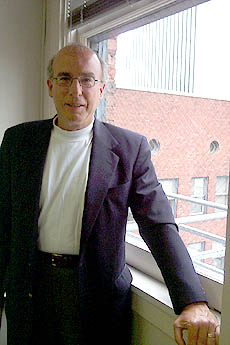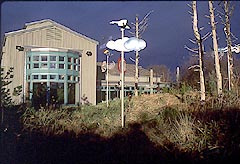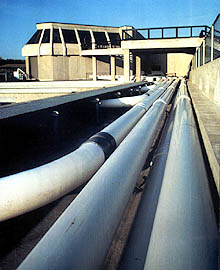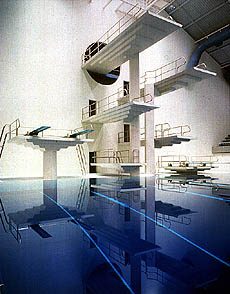|
Subscribe / Renew |
|
|
Contact Us |
|
| ► Subscribe to our Free Weekly Newsletter | |
| home | Welcome, sign in or click here to subscribe. | login |
Snapshots
| |

June 9, 1999
Fulton Tony Gale III

By SAM BENNETT
Journal Staff reporter

|
|
Fulton Tony Gale |
Position: A.I.A. Director of Architecture and Engineering, city of Seattle
Time on the job: Three weeks
Q: Before you joined the city, what areas of architecture did you pursue?
A: For a couple decades, I specialized in water-related architecture, which began with the design of fish and shrimp hatcheries, water and sewage treatment plants, major public viewing aquariums and several aquatic centers such as the Goodwill Games pool facilities. The majority of my projects have been semi-enclosed biosystems.
Q: Why did you decide to leave your 15-year practice, FultonGaleArchitects, Inc., for a position with the city?
A: I really decided over the last couple years that I could be more effective defining projects working within the public sector, rather than designing projects. It began for me in the early days working for Ralph Anderson as an apprentice cutting rebar under Occidental Avenue to plant the first street trees in Pioneer Square. The same kind of special places that began in the late '60s are really occurring in many areas in the city. I just want to be part of the creative team encouraging that momentum. It's a real important time for architecture, as important as when the Art Deco movement began in the early 1920s. The emphasis on sustainable architecture will affect every aspect of our lives.

|
|
Gale was aquarium designer of record for the Oregon Coast Aquarium in Newport. |
A: We get involved in a great amount of detail in the scoping of projects and project planning before hiring architectural planners. We follow the projects all the way through to the occupancy of the building. The city is managing over 100 buildings. The preponderance of our work through the years will be smaller projects, such as improved sleep areas for firemen and a host of maintenance projects. We look at early impacts of future projects and how we can tie existing built and natural environments into the future growth of the city. I'm also a member of the Seattle Green Building Team, which is drafting policies that will affect all aspects of buildings we manage as well as new projects.
Q: Was it difficult for you to give up designing buildings?
A: You do give up drawing designs, whether on computer or freehand, but I've always felt that probably the most creative and effective part of the process has to be the programming. That's where a lot of creative juices come into play. You look at a service center plan and a myriad of decisions that go into the design, and a good deal of it has nothing to do with drawing.
Q: What mistakes has the city made in terms of urban planning?
A: Seattle has less park area in the core of the city than any other major city in the U.S. Another major mistake was allowing so much growth outside the city, resulting in suburban sprawl. Now, with the Growth Management Act, that's being pulled back in and refocused and will have a lot to do with the positive future growth of Seattle.
Q: What do you hope to accomplish with the city?

|
|
As project manager for the Seattle Aquarium, Gale oversaw the design team for exhibits and building through construction. |
Q: What initially interested you in architecture?
A: My father was an architect for all of his career in Spokane. He used to take me to construction sites on the weekend. I got involved in construction as a teen in my early days. In addition to that, I inherited an artistic background from him. In the '60s, when I was at UW, things really came together. I saw architecture as something I could do to benefit the community, and now I see it as a platform, frankly, to really concentrate on such issues as global warming and other environmental concerns that will go far beyond our generation.
Q: What is your favorite building downtown?

|
|
Gale was designer of record for the Weyerhaeuser King County Aquatics Center in Federal Way, which was used for the 1990 Goodwill Games. |
Previous columns:
- SKB Architects, 06-02-1999
- Shawn R. Pickerill, Space, 05-26-1999
- Donald King, Donald King Architects, 05-19-1999
- Matt L. Driscoll, Driscoll Architects, 05-12-1999
- Tom Ferlan, Notkin Engineering, Inc., 05-05-1999
- Steven Erickson, Stock & Associates, 04-28-1999
- Cyndi Stever, Voute Design Group, Inc., 04-21-1999
- Jerry Lawrence, Burr Lawrence Rising + Bates, 04-14-1999


